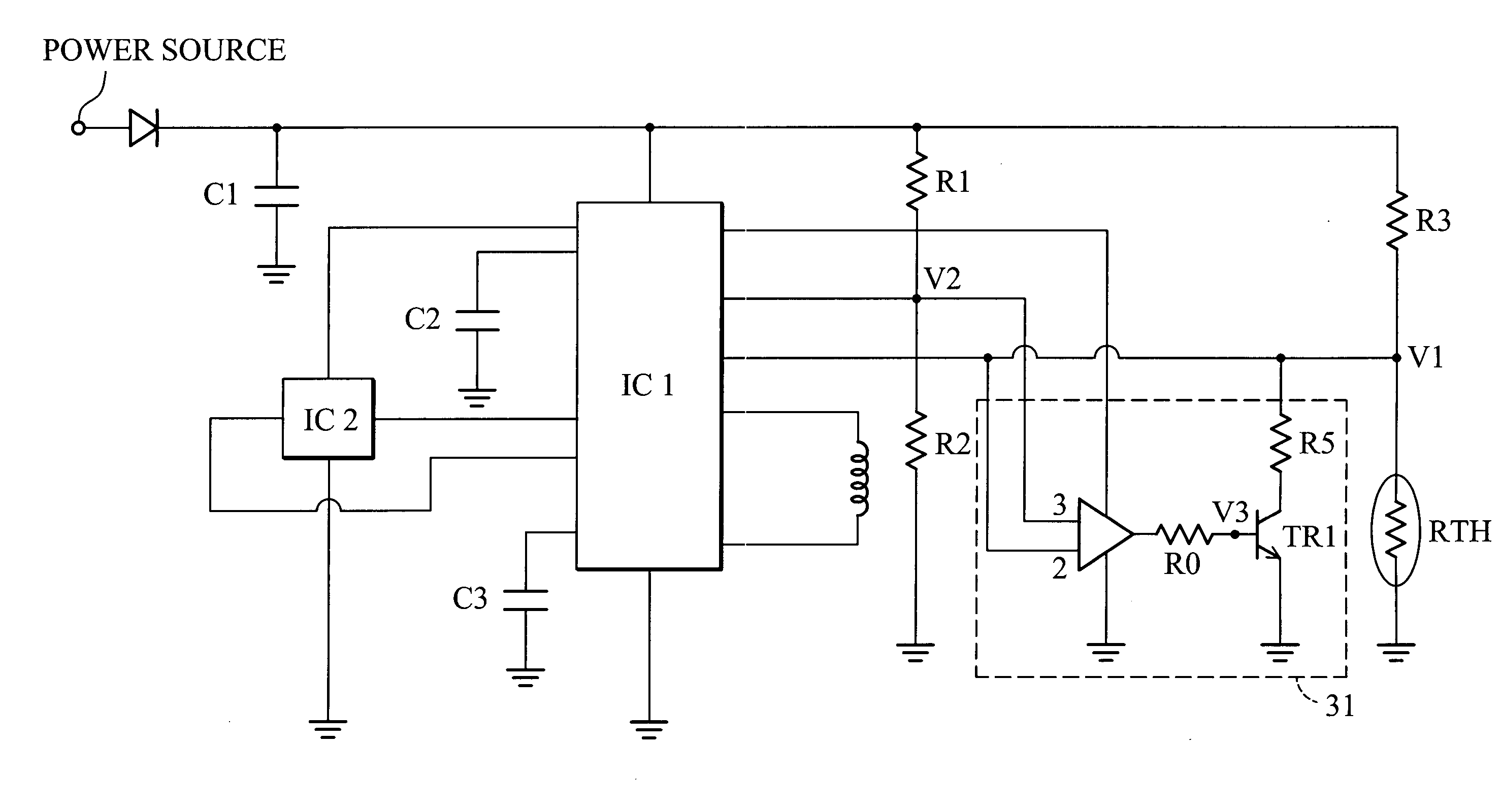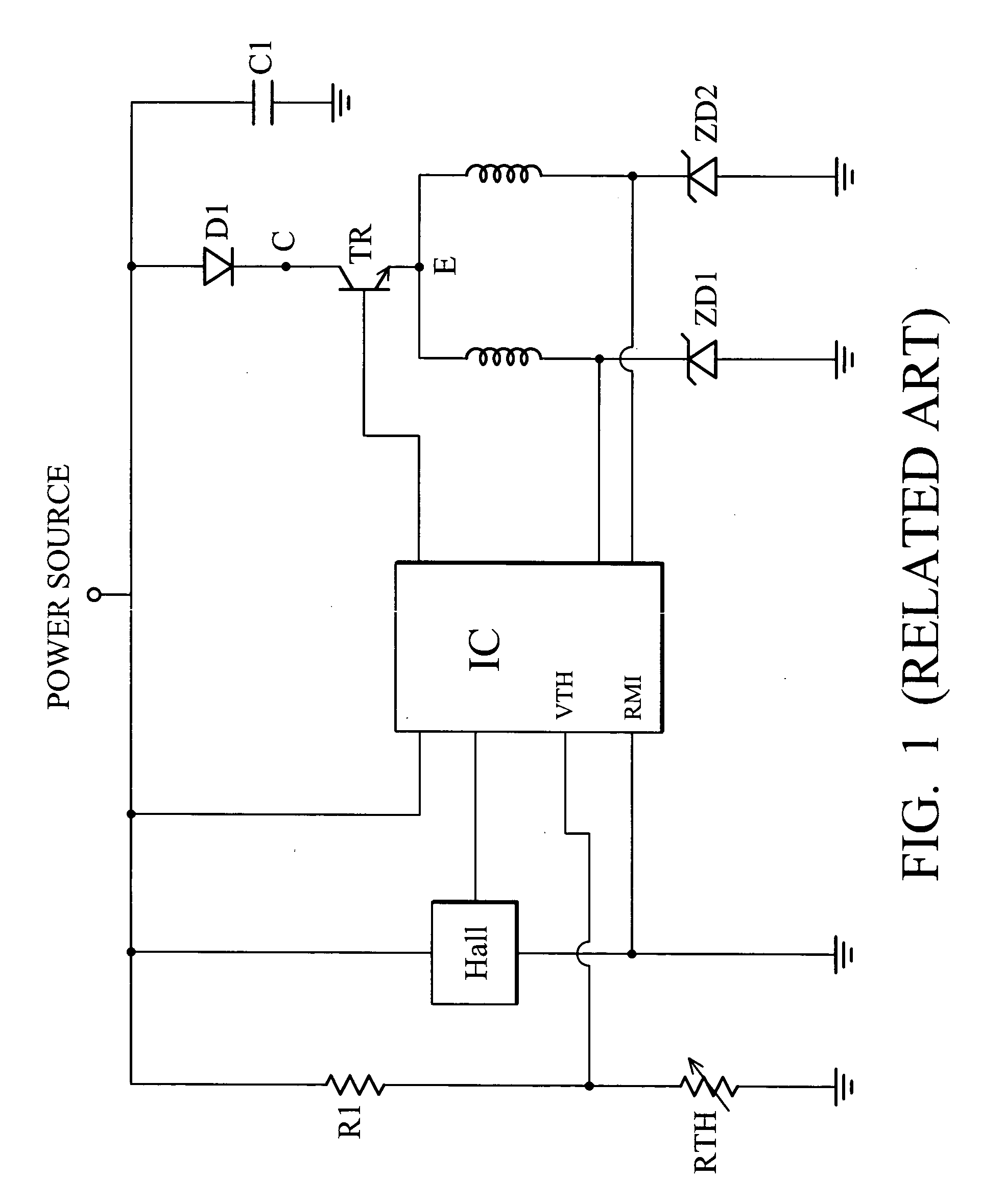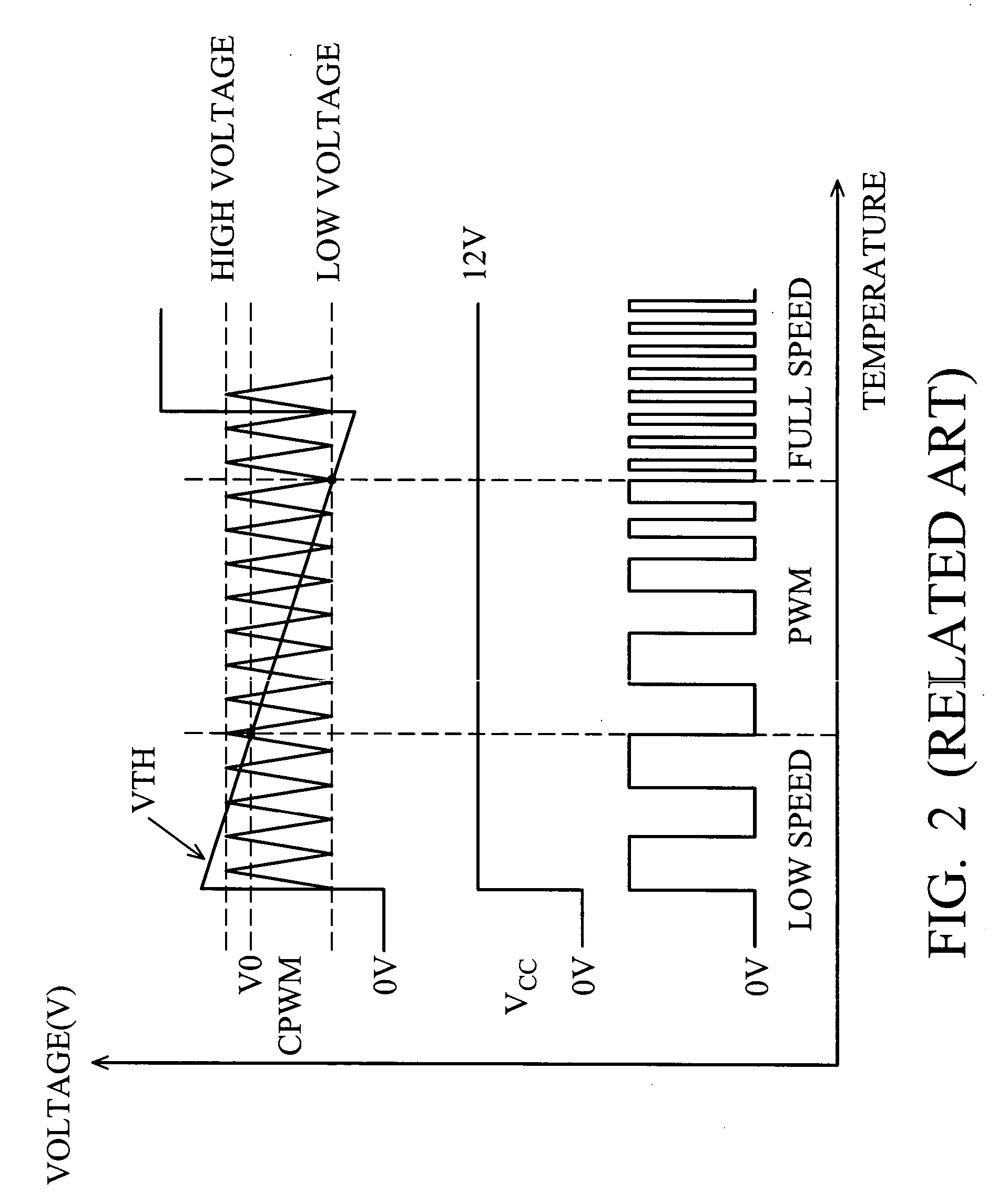Motor speed control device
a control device and motor technology, applied in the direction of process and machine control, electronic commutators, instruments, etc., can solve the problems of wasting power, reducing the life of fans, generating unnecessary noise, etc., and achieves the effect of simple external circuit and easy control of temperature turning points
- Summary
- Abstract
- Description
- Claims
- Application Information
AI Technical Summary
Benefits of technology
Problems solved by technology
Method used
Image
Examples
first embodiment
[0023] First Embodiment
[0024]FIG. 3A is a schematic diagram of the first embodiment of the motor speed control device of the present invention. As shown in FIG. 3, a power source supplies voltage to start fan rotation by inter-induction between winding coils and magnetic rings of the motor. A Hall induction integration circuit IC2 detects electric waves induced by magnetic field variation between winding coils and magnetic rings of the fan. After, the Hall induction IC IC2 outputs two positive and negative voltages to a driving integration circuit IC1. Thus, the circuit IC1 and the circuit IC2 constitute a driving element to drive the fan and send a feedback periodic pulse signal.
[0025] As well, the driving element is connected to a thermal sensor (or a thermistor) RTH and a switch circuit, wherein the switch circuit 31 includes a comparator, a transistor TR1, and two resistors R0 and R5 (as indicated by the dotted line in FIG. 3A). The thermal sensor RTH has various resistances at...
second embodiment
[0027] Second Embodiment
[0028]FIG. 4A is a schematic diagram of the second embodiment of the motor speed control device of the present invention. As shown in FIG. 4A, the detailed circuit and control theory are similar to those in the first embodiment. The difference between these two embodiments lies in a resistor R4 electrically connected with the thermal sensor RTH in series in this embodiment, unlike the switch circuit of the first embodiment.
[0029]FIG. 4B plots variation between the temperature and rotation speed in the second embodiment of the motor speed control device of the present invention. FIG. 4B shows variations in the slope between temperature and rotation speed of the fan before and after the resistor R4 is connected with the thermal sensor RTH in series. Without the resistor R4, the slope from temperature T1 to T2 is A. After the resistor R4 is connected with the thermal sensor RTH in series, variation of the first voltage V1 decreases. Temperature range from T2 to...
third embodiment
[0030] Third Embodiment
[0031]FIG. 5A is a schematic diagram of the third embodiment of the motor speed control device of the present invention. As shown in FIG. 5A, the detailed circuit and control theory are similar to those in the first embodiment. The difference between these two embodiments lies in a subtraction circuit 51 of this embodiment replacing the switch circuit of the first embodiment. The subtraction circuit 51 includes a comparator and six resistors R6, R7, R8, R9, R10, and R11, as indicated by the dotted line in FIG. 5A.
[0032]FIG. 5B plots variation between the temperature and rotation speed in the third embodiment of the motor speed control device of the present invention. As shown in FIG. 5B, when resistances of the resistors R6, R7, R8, and R11 are equal, voltage V5 equals voltage of voltage V4 taken away from voltage V1. Temperature range of the fan at full speed is thus reduced by adjusting fourth voltage V4, whereby the slope changes from A to a larger value D...
PUM
 Login to View More
Login to View More Abstract
Description
Claims
Application Information
 Login to View More
Login to View More - R&D
- Intellectual Property
- Life Sciences
- Materials
- Tech Scout
- Unparalleled Data Quality
- Higher Quality Content
- 60% Fewer Hallucinations
Browse by: Latest US Patents, China's latest patents, Technical Efficacy Thesaurus, Application Domain, Technology Topic, Popular Technical Reports.
© 2025 PatSnap. All rights reserved.Legal|Privacy policy|Modern Slavery Act Transparency Statement|Sitemap|About US| Contact US: help@patsnap.com



